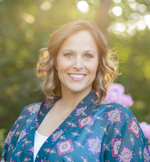If the pandemic has taught us nothing else, we’ve learned the art of flexibility, or at least the need for it. In full disclosure, I am far from an expert on grace in the face of adversity. I, too, have stumbled greatly during this pandemic. However, through it all, I have observed a few tips for flexibility in the academic arena, many of which are very transferrable to life in general.
Expect change
Ever hear the saying, “Change is inevitable”? Unfortunately, that’s true. This can be particularly problematic for a personality type in a profession that works in the same small space doing the same thing day in and day out. As a rule, dental hygienists thrive on routine. So when large scale change comes crashing in like COVID-19 did, it can be difficult to manage.
The reality is that whether change arrives in the form of a global pandemic or is just the result of the ever-evolving knowledge in our field, it will come. For example, 20 years ago we did not know what we know now about the relationship between periodontal disease and systemic conditions such as diabetes and cardiovascular disease. This discovery greatly changed how we practice. In fact, just a couple years ago, we thought our infection control was at the peak of the health-care industry. In many ways it was, but now, with knowledge learned through the pandemic, we cannot imagine that we ever practiced without N95s.
New knowledge, new experiences, and new events necessitate change. We must, however, acknowledge that this pandemic has brought changes like no other to students in the health professions—changes to schedules, expectations, course delivery methods, and to nearly every aspect of obtaining a degree. Yes, these have been big changes, but even just learning to expect change can alter how we respond when it arrives.
Be nimble
Spencer Johnson taught us a valuable life lesson in his book, “Who Moved My Cheese?”1 It is the story of four characters: Sniff and Scurry (mice), and Hem and HawWe all saw this when the pandemic began. There were plenty of Hems and Haws, but also plenty of Sniffs and Scurrys. You likely saw many Sniffs and Scurrys in your educational programs, as your faculty quickly adjusted to the new academic world we found ourselves in. Once you’ve accepted that change is inevitable, the next step is learning to pivot, like Scurry. Being nimble makes navigating the inevitabilities of life a bit easier to manage.
It is also of note that flexibility previously was not my strong suit, and as such, a former employer gifted me this book. I think they were trying to tell me something, and I found a pretty big life lesson in this tiny book. If you haven’t read it, I highly recommend adding it to your reading list.
Give people the benefit of the doubt
In any given moment, you may realize only about 2% of what a person is actually dealing with. I like to operate under the assumption that people are doing the best they can under the circumstances they have. Give people a break, including your faculty. I promise you, they’re tired and they’re emotionally, physically, and mentally fatigued, just like you.
This pandemic has been brutally exhausting in a million ways, and everyone has been reduced to just trying to survive most days. This shared human experience is the one thing that should join us all, butReference
1. Johnson S. Who Moved My Cheese? 1998; Penguin Putnam Inc.
Courtney E. Vannah, IPDH, MS, MPH, is a veteran dental hygienist from the Mid-Coast area of Maine. She first developed a love for the field of dentistry at the age of 16 as a dental assistant. Vannah completed her undergraduate degree in dental hygiene and a master’s degree in public health at the University of New England, as well as a master’s degree in dental hygiene at the University of Texas, Health Science Center, San Antonio. After a career in many areas, including oral surgery, cosmetic dentistry, and general practice, she focused on public health as the founding director of the University of New England Children’s Outreach Program. Through the years, she has been involved in various public health initiatives, including program planning, evaluation, and direction. She is now a full-time professor at the University of New England.







